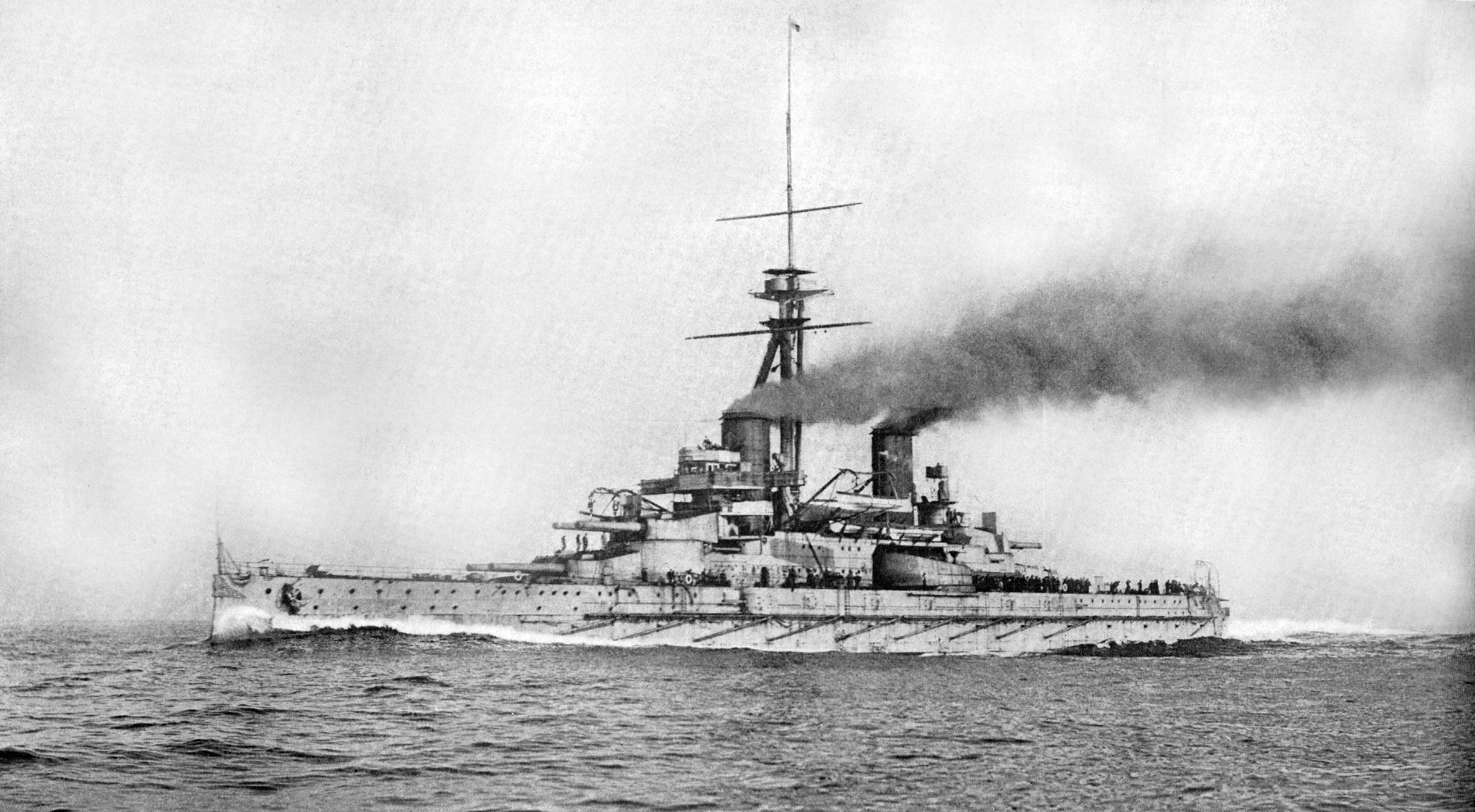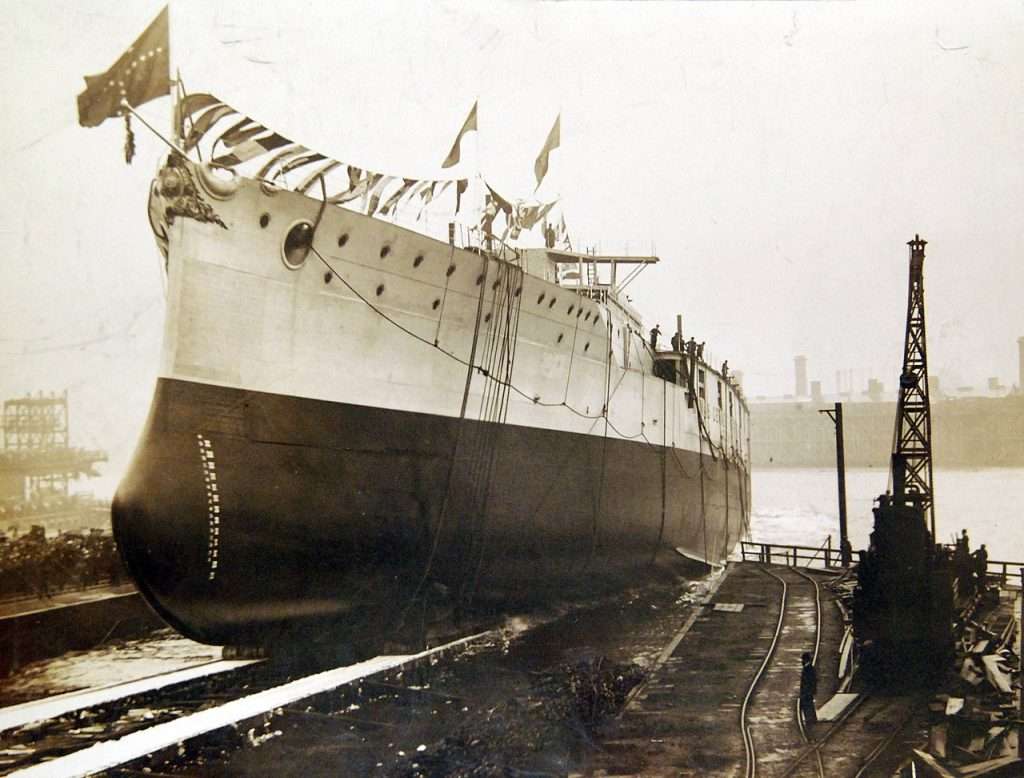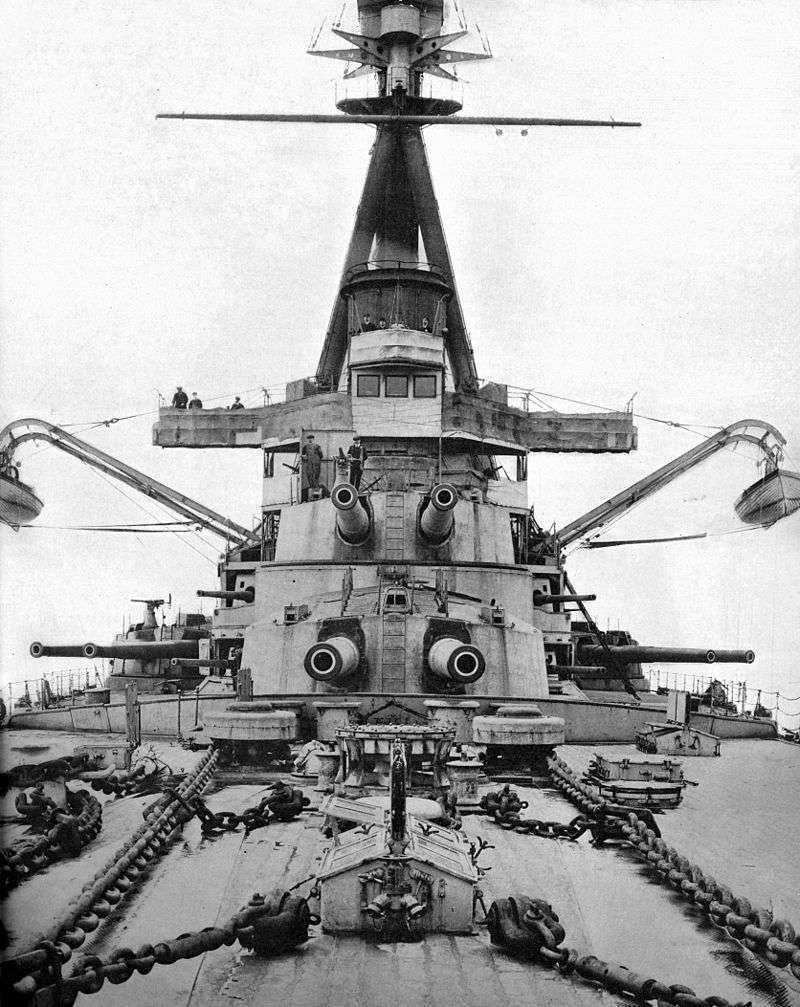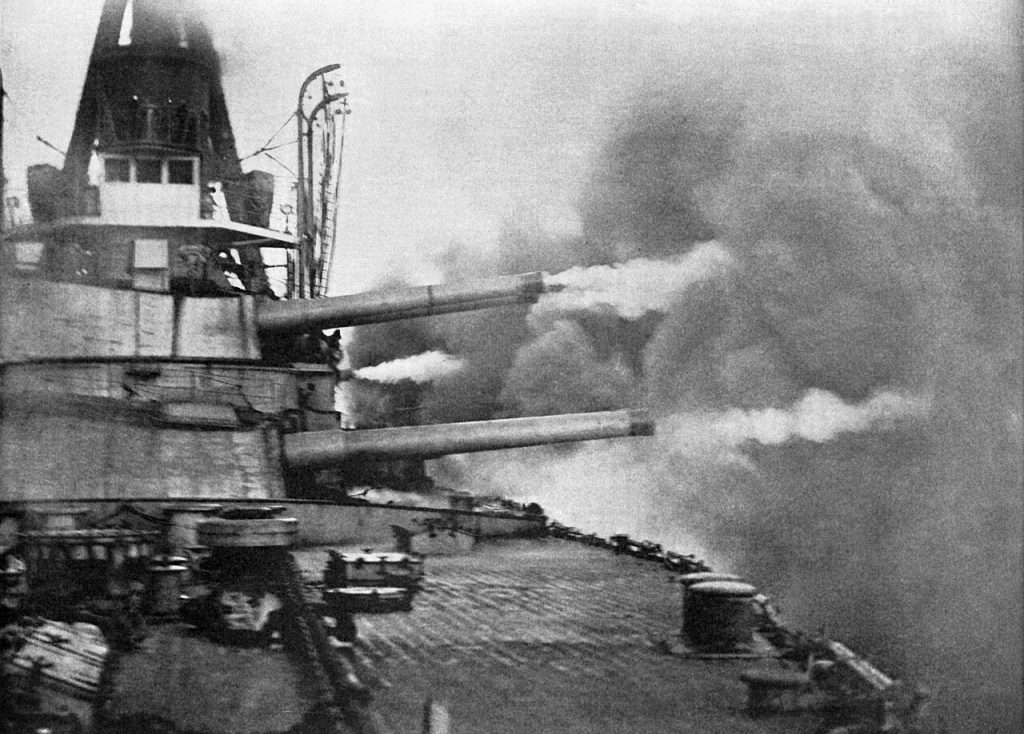The Minas Geraes was a groundbreaking dreadnought battleship commissioned by Brazil in the early 20th century.

Launched in 1908 from a British shipyard, its advanced design and formidable firepower spurred a regional naval arms race in South America.
After serving Brazil for several decades, it was decommissioned and subsequently scrapped in 1954.
Construction Of The Minas Geraes
The construction of the Minas Geraes was entrusted to the British, who were renowned for their maritime engineering prowess at the time.
The Minas Geraes was built at the Armstrong Whitworth shipyards in Elswick, Newcastle upon Tyne, and was launched in 1908.
The primary strength of the Minas Geraes lay in its armament. Armed with twelve 12-inch guns, its artillery capabilities were formidable.
What set the ship apart, however, was the arrangement of these guns. Positioned in six twin-gun turrets, the configuration was designed to maximize broadside firepower.
 Launching the Minas Geraes at Newcastle-upon-Tyne, 1908.
Launching the Minas Geraes at Newcastle-upon-Tyne, 1908.
Such a design was pioneering for its time and allowed the Minas Geraes to release a broadside from eight of its guns, a feature that surpassed many of its contemporaries in terms of sheer firepower.
In addition to its primary armaments, the Minas Geraes was fitted with secondary and tertiary batteries comprising of 22 4.7-inch guns and 8 3-inch guns, respectively.
These additional guns enhanced its prowess in naval engagements, allowing the ship to tackle a variety of threats, both from smaller enemy vessels and potential torpedo attacks.
Its belt armor ranged from 4 to 9 inches in thickness, with turret armor reaching up to 12 inches. This ensured that the ship could withstand significant damage while continuing its operations.
In terms of propulsion, the Minas Geraes was powered by 18 Babcock & Wilcox boilers, driving vertical triple-expansion steam engines that allowed the ship to achieve speeds up to 21 knots.
Dreadnought Race
The launch of the Minas Geraes in the early 20th century was not just a mere addition to Brazil’s naval fleet but an embodiment of the nation’s heightened aspirations and its place in the world order.
The Minas Geraes, along with its sister ship São Paulo, catalyzed what became known as the “South American dreadnought race.”
This race epitomized the power struggles and rivalries among the continent’s major nations.
 The superstructure of the Minas Geraes with a view of the fore gun turrets and the two wing turrets, 1910.
The superstructure of the Minas Geraes with a view of the fore gun turrets and the two wing turrets, 1910.
Brazil’s investment in such an advanced battleship was seen by its neighbors, particularly Argentina and Chile, as an overt flexing of naval muscle.
Their reaction was immediate, and a regional arms race ensued.
This frantic competition to procure and construct the latest naval assets reshaped the balance of power in South America, with countries scrambling to ensure they weren’t left behind in this maritime contest.
However, to view the Minas Geraes merely as a factor in this arms race would be reductive. The ship represented something much larger for Brazil.
At a time when European empires held dominion over vast swathes of the globe, and their battleships often symbolized their might, Brazil’s commissioning of the Minas Geraes was a clarion call to the world.
It proclaimed Brazil’s desire for greater autonomy, respect, and recognition on the international stage.
The battleship served as a manifestation of Brazil’s self-image as a burgeoning global player, signaling its intent to break free from the shadows of European dominance and chart its own course.
Operational History
At the forefront of the battleship’s operational history was its involvement in the Revolt of the Lash (Revolta da Chibata) in 1910.
This event was not just a typical naval uprising; it was a watershed moment for the Brazilian Navy and indeed, the broader Brazilian society.
Led by João Cândido Felisberto, the revolt saw crew members of various ships, including the Minas Geraes, rise against the cruel and archaic practices of their superiors.
These sailors, many of whom were of African descent, rebelled against the harsh physical punishments, notably the use of the “chibata” or whip, and the inhumane conditions they were subjected to.
 Ten of her 12-inch guns firing a boadside trained to port during gun trials.
Ten of her 12-inch guns firing a boadside trained to port during gun trials.
The Minas Geraes, as one of the most formidable vessels in the Brazilian fleet, played a central role in this uprising.
The mutineers aboard the ship not only demanded the abolition of corporal punishment but also better living conditions and greater rights.
The revolt forced the Brazilian government to negotiate.
As a direct result of this rebellion, Brazil initiated considerable reforms in the Navy.
In the global context, the Minas Geraes’s deployment during World War I is of note. While Brazil remained largely on the periphery of the primary theatres of conflict during the war, the looming threat from the Central Powers in the South Atlantic was palpable.
Though not engaged in direct combat, the Minas Geraes, along with other vessels in the Brazilian fleet, was tasked with patrolling the South Atlantic.
Their presence acted as a deterrent, ensuring the safety of Brazilian and Allied maritime interests against potential naval incursions or submarine warfare.
What Is Minas Gerais Best Known for?
This Brazilian state has long been known for its mining. Since the 17th century, its land has been mined for gold. In 1729, diamonds would become the new attraction.
Minas Gerais is the source of over half of Brazil’s mineral output. Though the gold dried up in the 19th century, Minas Gerais remains popular for its semi-precious stones.
Fate Of The Minas Geraes
Following World War I, the interwar years witnessed rapid technological advancements in naval warfare.
The rise of aircraft carriers, more advanced battleships, and novel naval strategies began to overshadow the once-feared dreadnoughts.
As the world inched closer to the outbreak of World War II, the Minas Geraes started showing signs of obsolescence.
In 1936, an attempt was made to modernize the ship, but the endeavor was incomplete. By World War II, the ship was clearly obsolete when compared to the latest naval vessels.
Her days of active duty were numbered.
 Minas Geraes in Salvador during a refit.
Minas Geraes in Salvador during a refit.
By the early 1950s, the Brazilian Navy decided to decommission the Minas Geraes. In 1953, the once-proud symbol of Brazilian naval power was sold for scrap. She was towed to Genoa, Italy, where she was eventually dismantled in 1954.
The ship’s fate was not uncommon for large battleships of her time. The rapid technological advancements in naval warfare, especially post-World War II, meant that many such ships were either modernized or phased out.